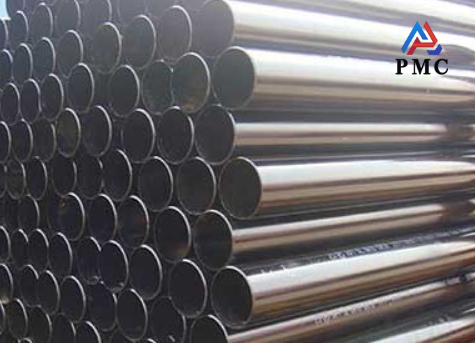
Is Seamless Steel Pipe a Stainless Steel Pipe?
In the world of pipes, people often have this question: Is seamless steel pipe a stainless steel pipe? The answer is no. Although they are both widely used in various fields, they are actually two different pipes.
They are two different classification dimensions:
Seamless Steel Pipe refers to the manufacturing process, which means that this kind of steel pipe has no welding seams in the production process, but is formed in one go by heating the solid steel billet and then performing processes such as piercing, rolling, drawing or extrusion.
Stainless Steel Pipe refers to the material type, which means that the material of this steel pipe is "stainless steel", that is, it contains at least 10.5% chromium and other alloy elements (such as nickel, molybdenum, etc.) to obtain excellent corrosion resistance.
Therefore, seamless steel pipes can be:
Seamless Carbon Steel Pipe: This is the most common type of seamless steel pipe, made of plain carbon steel (ASTM A106 Gr.B, etc.).
Seamless alloy steel pipe: made of alloy steel, such as chrome-molybdenum steel (such as P11, P22, P91, etc.), used for high temperature and high pressure or special performance requirements.
Seamless stainless steel pipe: made of stainless steel material (such as 304, 316L, 2205 duplex steel, etc.), used in situations where corrosion resistance is required.
Likewise, stainless steel pipes can also be:
Stainless steel semless pipe: As mentioned above, stainless steel pipe produced by seamless process.
Stainless steel welded pipe: Steel pipe made by curling and welding stainless steel plate or strip.

Ingredients revealed: essential differences
Seamless steel pipes are usually made of ordinary carbon steel or alloy steel, such as the common Q235, 10#, 20# steel, etc. Carbon, silicon, manganese and other elements are the main components of these steels. They determine the basic strength and toughness of seamless steel pipes, and can meet most scenarios with low requirements for corrosion resistance, such as ordinary building structures, fluid transportation, etc.
Among the components of stainless steel pipes, chromium is the key element that makes them corrosion-resistant. When the chromium content reaches 10.5% or above, a dense chromium oxide protective film will be formed on the surface of the steel pipe. This film can effectively prevent oxygen, moisture, etc. from chemically reacting with the iron matrix inside the steel pipe, thereby preventing rust and corrosion. The addition of nickel further enhances the resistance of stainless steel pipes in various complex corrosion environments, especially when facing strong corrosive media such as acids and alkalis, nickel can enhance the stability and corrosion resistance of steel.
Performance competition: each has its own strengths
In terms of performance, seamless steel pipes and stainless steel pipes have their own advantages. The biggest highlight of stainless steel pipes is their excellent corrosion resistance, which is due to their special composition, allowing them to work stably for a long time in highly corrosive environments such as moisture, acid and alkali, and are not easily corroded and damaged.
Although seamless steel pipes are inferior to stainless steel pipes in terms of corrosion resistance, they are generally stronger and harder, which makes them play a key role in scenarios with high pressure and heavy loads. For example, in the field of oil and gas transportation, pipelines need to be able to withstand huge internal pressure. Seamless steel pipes rely on their own high strength to ensure that oil and gas can be transported to their destination safely and efficiently.
In addition to being corrosion-resistant, stainless steel pipes also show good adaptability in some special environments. In high temperature environments, it can maintain good mechanical properties and will not be easily deformed or damaged due to temperature increases. In high temperature industrial scenarios such as thermal power generation and chemical refining, stainless steel pipes can stably transport high temperature media; in low temperature environments, it has good toughness and will not become brittle due to low temperatures, ensuring normal use in cold areas.
How to choose?
In practical applications, the key to choosing seamless steel pipes or stainless steel pipes lies in specific needs. If cost is the primary consideration and the use environment does not require high corrosion resistance, such as ordinary construction and general mechanical parts manufacturing, seamless steel pipes are an economical choice. If there is a risk of corrosion in the application scenario, such as food and beverage processing, chemical production, marine engineering, etc., stainless steel pipes can ensure the long-term stable operation of the pipeline with their excellent corrosion resistance. Although the cost is relatively high, it is often more cost-effective in terms of long-term use and maintenance costs. Therefore, when choosing pipes, you must combine your actual needs and comprehensively consider various factors to select the most suitable pipes.
Read more: Theoretical Weight of Seamless Steel Pipe


